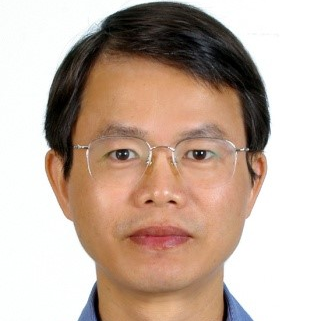Selected Papers from IEEE Eurasia Conference on Biomedical Engineering, Healthcare and Sustainability 2020
A special issue of Sustainability (ISSN 2071-1050). This special issue belongs to the section "Health, Well-Being and Sustainability".
Deadline for manuscript submissions: closed (28 February 2021) | Viewed by 54271
Special Issue Editors
Interests: IOT devices; photovoltaic devices; STEM education
Special Issues, Collections and Topics in MDPI journals
Interests: neuronal cell differentiation and growth; research to find neurotrophic-factor-like substances from plants that help maintain survival; development of chemical reactions of palladium catalysts
Special Issues, Collections and Topics in MDPI journals
Interests: servo motor drive design, neural network control, intelligent robotics
Special Issues, Collections and Topics in MDPI journals
Special Issue Information
Dear Colleagues,
The second IEEE Eurasia Conference on Biomedical Engineering, Healthcare and Sustainability (IEEE ECBIOS 2020, http://www.ecbios.asia) will be held in Osaka, Japan, from 29 May to 31 May, 2020, and it will provide a unified communication platform for researchers on the topics of biomedical engineering, healthcare and sustainability. Recently, healthcare has been undergoing a sector-wide transformation thanks to advances in computing, networking technologies, big data and artificial intelligence. Healthcare is not only changing from being reactive and hospital-centered to preventive and personalized but is also changing from being disease focused to well-being centered. Healthcare systems, as well as fundamental medicine research, are becoming smarter and enabled in biomedical engineering. Furthermore, with cutting edge sensors and computer technologies, healthcare delivery could also yield better efficiency, higher quality and lower cost.
The Special Issue on “Selected Papers from the IEEE Eurasia Conference on Biomedical Engineering, Healthcare and Sustainability 2020 (IEEE ECBIOS 2020)” will include notable papers presented at the IEEE ECBIOS 2020 and other high-quality papers about sustainability. It will link several disciplines, including the environmental, cultural, economic and social sustainability of human beings, and provide an advanced forum for studies related to sustainability and sustainable development. Our aim is to encourage scientists to publish their experimental and theoretical research relating to natural sciences, social sciences and humanities in as much detail as possible in order to promote scientific predictions and impact assessments of global change and development. Potential topics include (but are not limited to):
- Water pollution and sanitation;
- Toxic chemicals and hazardous and radioactive wastes;
- Degradation of ecosystems and species and the concomitant risks to human well-being;
- Health-related aspects of sustainability;
- Sustainable chemistry;
- New and renewable sources of energy;
- Sustainable energy preservation and regeneration methods;
- Land and aquatic ecosystems maintenance and biodiversity preservation;
- Sustainability tools;
- Applications of sustainability;
- Sustainability science;
- Other topics related to sustainability.
Prof. Dr. Teen-Hang Meen
Prof. Dr. Fukuyama Yoshiyasu
Prof. Dr. Ming-Shyan Wang
Guest Editors
Manuscript Submission Information
Manuscripts should be submitted online at www.mdpi.com by registering and logging in to this website. Once you are registered, click here to go to the submission form. Manuscripts can be submitted until the deadline. All submissions that pass pre-check are peer-reviewed. Accepted papers will be published continuously in the journal (as soon as accepted) and will be listed together on the special issue website. Research articles, review articles as well as short communications are invited. For planned papers, a title and short abstract (about 250 words) can be sent to the Editorial Office for assessment.
Submitted manuscripts should not have been published previously, nor be under consideration for publication elsewhere (except conference proceedings papers). All manuscripts are thoroughly refereed through a single-blind peer-review process. A guide for authors and other relevant information for submission of manuscripts is available on the Instructions for Authors page. Sustainability is an international peer-reviewed open access semimonthly journal published by MDPI.
Please visit the Instructions for Authors page before submitting a manuscript. The Article Processing Charge (APC) for publication in this open access journal is 2400 CHF (Swiss Francs). Submitted papers should be well formatted and use good English. Authors may use MDPI's English editing service prior to publication or during author revisions.
Keywords
- health-related aspects of sustainability
- sustainable chemistry
- sustainable energy preservation and regeneration methods
- sustainability tools
- applications of sustainability
- sustainability science
Benefits of Publishing in a Special Issue
- Ease of navigation: Grouping papers by topic helps scholars navigate broad scope journals more efficiently.
- Greater discoverability: Special Issues support the reach and impact of scientific research. Articles in Special Issues are more discoverable and cited more frequently.
- Expansion of research network: Special Issues facilitate connections among authors, fostering scientific collaborations.
- External promotion: Articles in Special Issues are often promoted through the journal's social media, increasing their visibility.
- Reprint: MDPI Books provides the opportunity to republish successful Special Issues in book format, both online and in print.
Further information on MDPI's Special Issue policies can be found here.







